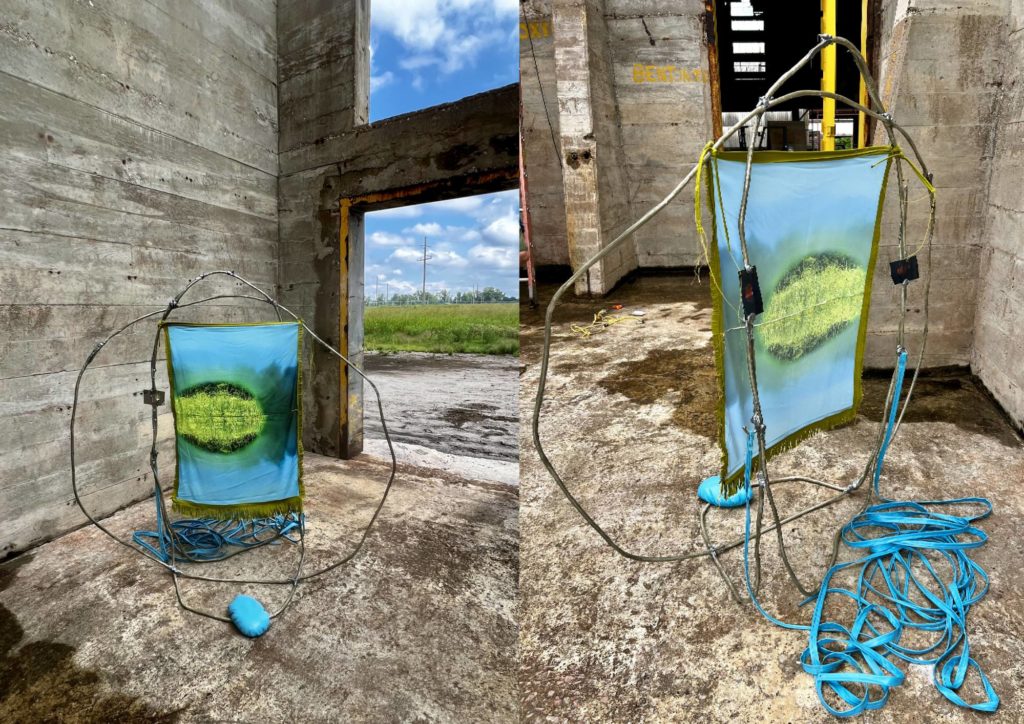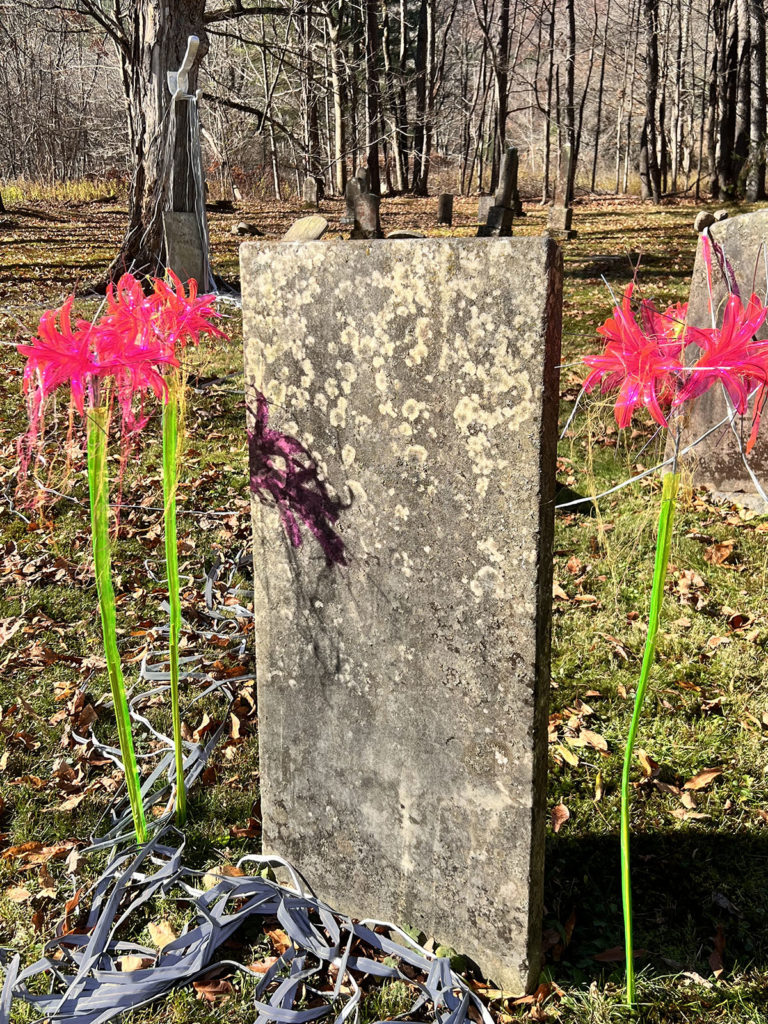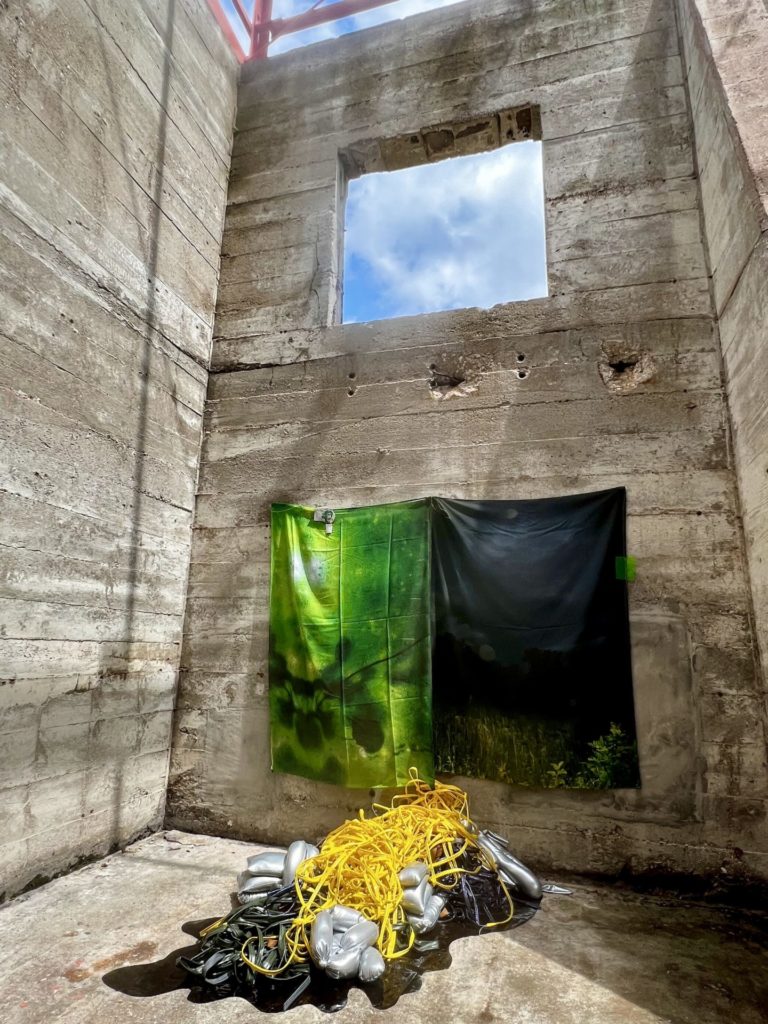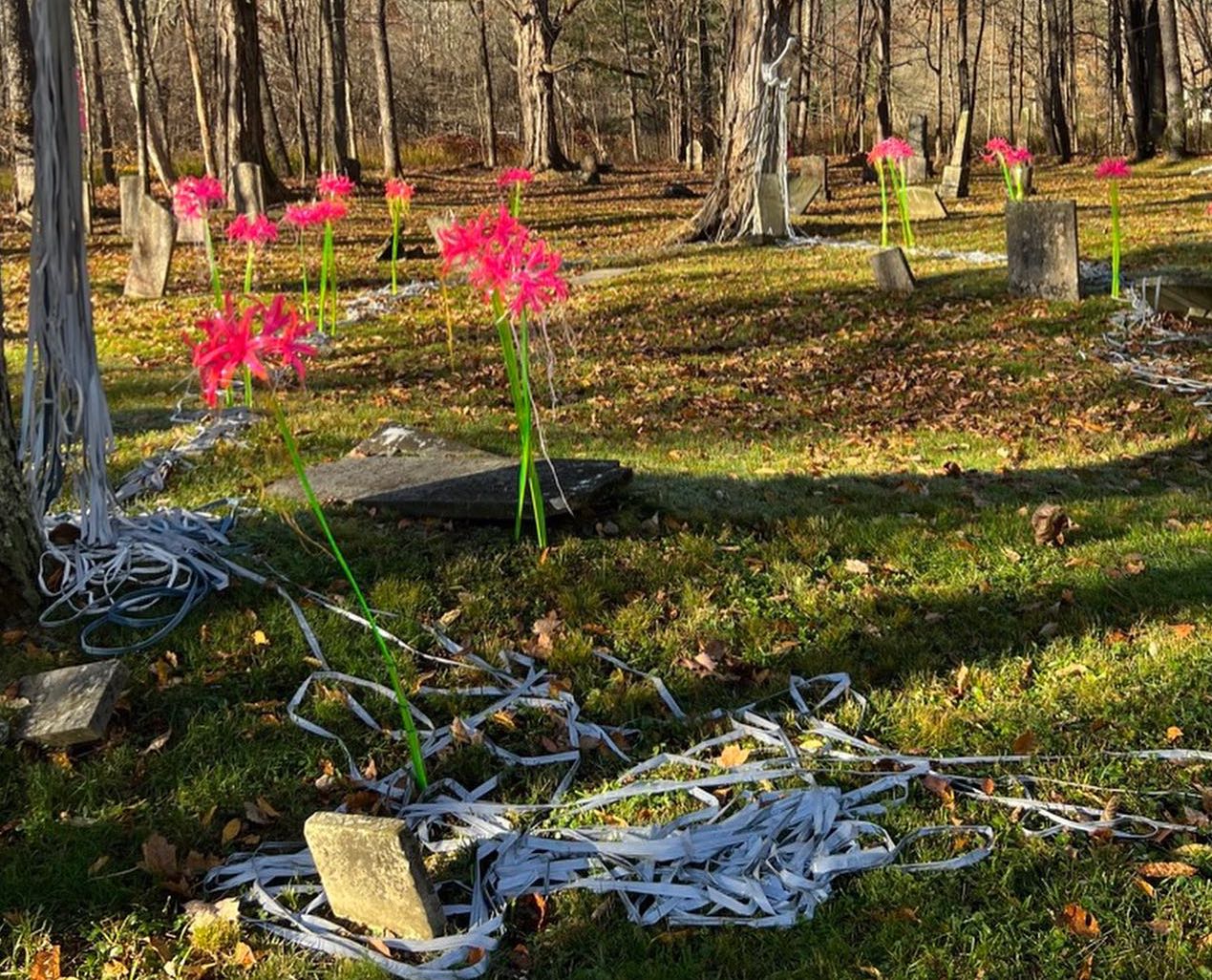If you were at Delight Flower Farm this July, you probably noticed an addition to their regular lineup of flowers: a gorgeous series of ghost lily sculptures created by their artist-in-residence, Melissa Pokorny. Pokorny is a Professor of Studio Art at the University of Illinois, and a sculptor whose works have been exhibited throughout the United States. Originally from St. Louis, Pokorny moved to Champaign-Urbana in 2001 when she joined the U of I’s faculty. I recently corresponded with her to learn more about those ghost lily sculptures, how teaching influences her creative work, and more.
Some answers have been edited for length and clarity.
Smile Politely: Can you talk about the progression of your sculpture-making and your personal learning process? How would you characterize your practice?
Melissa Pokorny: I’m someone who has very slow periods in the studio, followed by short bursts of intense making. The slowness is necessary for me to gather the various materials, images, and objects that go into my mixed-media sculptures and installations. I use a variety of methods and materials to make my work, and I spend a lot of time searching for my core materials — like aluminum wire, surplus industrial aluminum tape, aluminum objects, types of adhesives, etc. Then I also gather images to print, because lens-based practices like photography and scanning also play a large part in my practice. Lastly, I’m always on the lookout for found objects. I like simple, utilitarian things like hat hooks, old ceramics, and wooden cups; things that are commonplace in just about any domestic setting. I also do a lot of sewing to create forms, piles of cording, and decorative edges. My studio is typically a staging area for combinations of these elements. I arrange and rearrange until there is just the right amount of tension, cohesion, and play between all the elements.

SP: When you are starting a new piece or a new project, can you walk us through your process? Do you have a clear idea of how you want it to turn out before you begin, is there a lot of experimentation or improvising along the way?
Pokorny: My work is all about experimentation and improvisation — like cooking. What tastes good together? What otherwise unexceptional flavors are made more vivid and complex when combined? Usually if I have a clear idea of how I want something to turn out, it’s a bad idea! Each piece that ends up as “finished” is the product of endless iterations and revisions. And I do also re-use work when it’s expedient and feels appropriate.
SP: You recently had an installment at Delight Flower Farm. How did they come about? Did you already have the sculptures or were they made specifically for Delight? Are there plans for future displays there?
Pokorny: I piloted their first season of their new artists residency. Flowers are something that pop up in my work a lot, and I’ve always been a huge fan of Delight Flower Farm. Picking up my CSA flowers there, I always thought it would be great if there was a residency opportunity there. When they put out the call last spring, I applied. I will do an installation there sometime this fall. The installation is one that I’ve done at various other locations, and it’s part of an ongoing project that centers on ghost lilies and their connection to place, distribution, and symbolism. I also took a ton of flower portraits while I was there, and I’m hoping to feature some of those in the mix, too.

SP: How does your role as a professor impact your art making?
Pokorny: I feel like it keeps me nimble. I’ve been doing this for almost 35 years, so at this point I have a pretty good sense of what it means to bridge my long experience of being a maker into helping students figure out a way into their own practice.
SP: What do you like best about teaching? What do you find most challenging?
Pokorny: The best part of teaching is having a sustained amount of time with an individual and seeing them grow and expand as artists. To be there when someone is making a breakthrough in their practice is always gratifying and such a privilege. I never forget those moments.
The most challenging thing about teaching is how much of a disconnect there is between what one does as an artist — the endless time spent in the studio just looking, thinking, trying something out, taking weird leaps — and the academic schedule. The process of slow looking and considered making is critical for studio practice, and really hard to do in a 16-week class. Teaching people to slow down, and to value process over product is always a challenge.
SP: What are you currently working on?
Pokorny: I’m always editing photographs, selecting a few to print from the thousands I take. The ghost lily project is ongoing and very labor intensive, but I’m having fun with trying to stick with it over various sites and iterations. Making the lilies takes a lot of time, so that’s a constant. I’m also currently working on the set pieces for Deke Weaver’s next chapter of the Unreliable Bestiary. This one is Cetacean (whale).

SP: Where do you source the materials for your sculptures?
Pokorny: Ebay, Etsy, thrift stores, hardware stores, online custom fabric printing.
SP: What have been the most rewarding and most challenging projects you’ve completed to date?
Pokorny: Every project is both challenging and rewarding — otherwise, why do it?
SP: What’s next for you?
Pokorny: Back to school. Teaching ceramics. Making work for an upcoming show in Ohio next spring.
If you want to check out more of Pokorny’s work, she has a piece included in the newly reinstalled Art Since 1945 at Krannert Art Museum, and you can see more on her website and Instagram.








